Anti Collision Device
Increase safety and prevent collision of overhead cranes on the same bay.
Infrared Anti-Collision Device for Overhead Cranes.
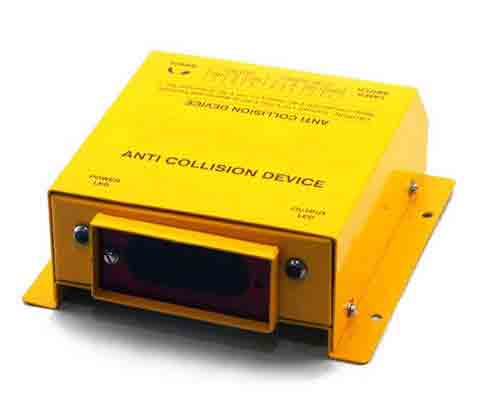
What is an Anti Collision Device?
Basic construction of an Anti Collision Device is very simple , it Consists of a sensor & a relay.
Safety First
It is exactly like an emergency braking system where the Sensor is continuously aware of its surrounding environment to detect the presence or absence of any foreign equipment . When an ACD Is mounted on a machine , first it is calibrated according to the user requirement.
Reaction to External Objects
The reaction time of the sensor of your anti collision device is an important factor depending upon its application.If your machine is moving at 20 meters / second and the reaction time of your sensor is 0.5 Seconds, the machine will move almost 10 meters ahead before it is stopped by the ACD. The ACD should be tested in its final working environment after mounting and calibration .
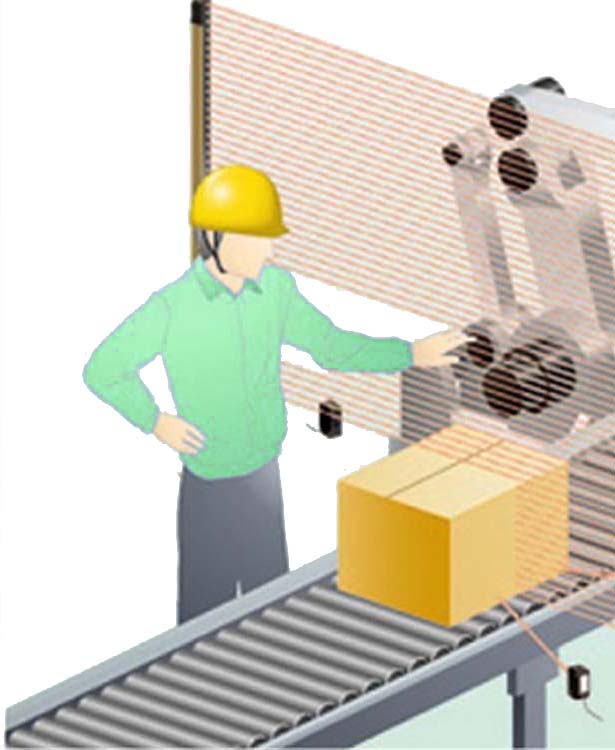
Need for Anti Collision Device
An Anti Collision Device is categorized as a safety device which prevents an accident due to the collision of two machines.Without such a device, manually or automatically operated machines can travel outside their working area and damage nearby machines, equipment or structures and can cause dangerous situations .
Infrared Based
Infrared Based safety devices make use of the infrared spectrum of light which is invisible to human beings.Infrared light is higher frequency light than radio frequencies and it is used in thousands of industrial applications.
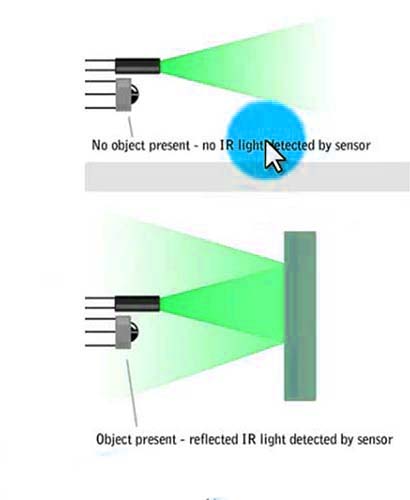
Advanced MicroProcessor based safety device
The ACD-01 and ACD-02 are microprocessor based Infrared Anti collision Device (ACD) modules to increase safety and prevent collision of overhead cranes. ACD-01 is 1 Distance Set point module with Single Relay Output , while the ACD-02 is 2 Distance Set Point Module with Dual Relay Output.They are supplied with an infrared Emitter & Detector which emits and detects light waves in the infrared spectrum and an infrared reflector ,which reflects the infrared light emitted by the device.
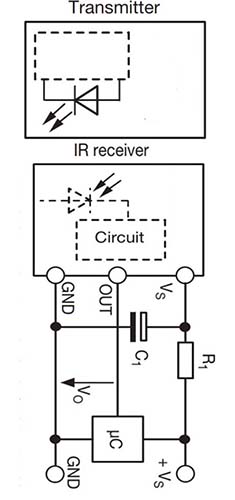
Easily Set the Detection Distance.
1st ACD to be mounted on 1st Crane with its reflector Mounted on 2nd Crane. 2nd ACD to be Mounted on 2nd Crane with its reflector Mounted on 1st Crane. Such a system will allow both the cranes to stop at the same time. Next, bring both the overhead cranes at the precise distance you want the power to be cut. The infrared reflector has to be mounted in level with the infrared Emitter. To help with the reflector mounting , an inbuilt laser is provided which points to the precise location where the reflector needs to be mounted.Once, the reflector and ACD are properly mounted, rotate the distance knobs in the clockwise direction until the relay indicating light switches on. This means the distance is set.

Reflector Based
2 Set Points
Metal body
Infrared Based
Mounting Dimensions of Anti Collision Device
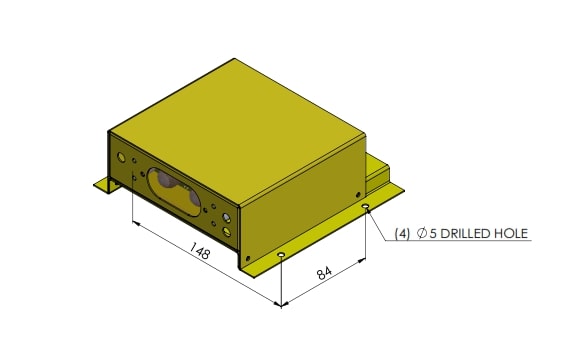
Product List of Anti Collission
| Sr. no. | Product Name | Description | Part Number | Images |
|---|---|---|---|---|
| 1 | ANTI COLLISSION SWITCH 3 Mtr | 0 TO 3 MTR RANGE | ACD-03 | 
|
| 2 | ANTI COLLISSION SWITCH 10 Mtr | 0 TO 10 MTR RANGE | ACD-10 |
10 Millisecond Fast Reaction time
Greater than 10 Meter Detection Distance
Good Immunity from nearby interfering Light Sources
The Sensitivity to noise of the detector of the Anti Collision Device automatically reduces in the presence of nearby noisy light sources to insure proper operation.
2 Set Points.
1st Set Point to reduce Speed of Crane, 2nd Set point to stop Crane
Specifications
| Supply Voltage | 110VAC/220VAC/24VDC | |
|---|---|---|
| Number of Set Points | 2 | |
| Power Consumption | 0.5 watts | |
| Operating Temperature | 0 degrees to 70 degrees | |
| Maximum Transmission Distance | 10 Meters | |
| Minimum Transmission Distance | 1 Meter | |
| Minimum irradiance | 0.08 W/m2 | |
| Maximum Irradiance | 30 W/m2 | |
| Suppression of Interference from nearby Light Sources | Yes | |
| Infrared Reflector Required | Yes | |
| Infrared Carrier Frequency | 38 KHz | |
| Relay Output Rating | 110VAC 10 Amps 220VAC 10 Amps 30VDC 10 Amps |
|
| Enclosure | Sheet metal | |
| Enclosure Dimension | 180mmx145mmx55mm | |
| Indicating Leds | Red Led | |
| Laser Alignment | Provided for alignment of reflector |
More about Infrared Light
This infrared light can also be used to communicate data between devices. All kinds of remote controls in home appliances such as Air Conditioners & Televisions use the IR spectrum. But to prevent natural sources of infrared light such as the sun,from interfering with the safety devices, the infrared radiation from the emitter is modulated at a certain frequency .This Modulated data is then received by the Infrared receiver and demodulated to extract the data. Infrared receiving devices are made up of photodiodes which are semiconductor based integrated circuits which react to infrared light by inducing a small current. Infrared transmitting devices are made up of semiconductor material such as GaAlAs & GaAs. The transmitters emit the IR light in front of them within a certain angle exactly like your Car HeadLIghts.
Advantages of using IR sensors
They are invisible to the eyes of human beings
They can detect objects without contact
Extremely low Power Requirements
Notes:
*Infrared Transmitters are highly directional and can only transmit in Line of Sight as they are
blocked by hard objects such as metals and walls.
*One infrared device can communicate with only one other Infrared Device
*IR transmitters can emit radiation upto 30 Meters
*Other natural or artificial sources of Infrared light affect the IR receivers
Applications :
Prevent Collision of Two EOT Cranes travelling towards each other.
Reduce Speed of Overhead Crane .
Prevent Collision of an EOT Crane at its travelling end position.
The Anti Collision Device for EOT Cranes: Enhancing Safety in Industrial Settings
Introduction
In the bustling realm of industrial operations, safety of workers and machinery is of paramount importance. EOT (Electric Overhead Traveling) cranes play a vital role in lifting heavy loads, but their sheer size and weight make collision accidents a looming threat. To tackle this concern, the Anti Collision Device for EOT Cranes has emerged as a game-changer, revolutionizing safety measures in the Indian industrial landscape.
How Does the Anti Collision Device for EOT Cranes Work?
The Anti Collision Device for EOT Cranes employs advanced technology to prevent collisions between multiple cranes or between a crane and other structures. Utilizing modern sensors and wireless communication, it facilitates real-time monitoring and coordination between cranes, ensuring optimal safety and efficiency.
By evaluating the positions, velocities, and surrounding obstacles, the device generates alerts, audible alarms, and visual signals to crane operators, enabling them to take precautionary actions and redirect their cranes to avoid potential collisions. This innovative solution acts as a vigilant assistant, reducing the risks of accidents and property damages.
The Key Benefits of Implementing Anti Collision Device for EOT Cranes
1. Enhanced Workplace Safety:
The Anti Collision Device fosters a safe working environment by minimizing the chances of collisions and ensuing accidents, ensuring the well-being of crane operators, other workers, and valuable equipment.
2. Increased Operational Efficiency:
By enabling seamless communication and coordination between cranes, the device optimizes the utilization of space, improves productivity, and avoids unnecessary downtime caused by preventable collisions.
3. Cost Savings:
Avoiding collisions leads to significant cost savings by reducing equipment damages, downtime, and potential legal liabilities. Investing in anti-collision solutions demonstrates a commitment to workplace safety, bolstering the reputation of the organization.
4. Easy Integration:
The Anti Collision Device can be seamlessly integrated into existing crane systems, minimizing disruption to ongoing operations. Its user-friendly interface and compatibility with various crane models make it a versatile solution adaptable to diverse industrial settings.
Frequently Asked Questions (FAQs)
Q: Can the Anti Collision Device for EOT Cranes be customized to specific industrial requirements?
A: Yes, the device can be tailored to meet the specific needs of various industries, such as steel, automotive, construction, and more. It can accommodate different crane types, dimensions, and site layouts.
Q: Does the Anti Collision Device require significant maintenance and regular calibration?
A: The device is designed to be robust and requires minimal maintenance. Periodic calibration ensures its optimal performance, guaranteeing reliable collision prevention.
Q: Are there any industry-specific regulations that mandate the use of Anti Collision Device for EOT Cranes?
A: While regulations may vary by country and industry, the implementation of anti-collision measures is strongly encouraged, as they play a crucial role in ensuring worker safety and complying with occupational safety guidelines.
Conclusion
The Anti Collision Device for EOT Cranes presents a revolutionary approach to enhancing safety in industrial settings. With its seamless integration, real-time monitoring, and efficient collision prevention capabilities, it not only prevents accidents but also maximizes operational efficiency. By investing in this innovative technology, industries in India are taking significant strides towards creating safer working environments and fostering a culture of workplace safety
Anti-Collision Devices for EOT Cranes: Safeguarding Precision and Safety
In the bustling world of material handling, Electric Overhead Traveling (EOT) cranes play a vital role. These steel giants gracefully lift and transport heavy loads, ensuring the smooth flow of goods in factories, warehouses, and construction sites. But what keeps them from colliding with each other or other structures? Enter the unsung heroes—the anti-collision devices (ACDs).
Understanding Anti-Collision Devices
An ACD is like a vigilant traffic cop for cranes. It prevents collisions between multiple cranes sharing the same runway or between a crane and nearby structures. Picture this: two cranes moving toward each other, their paths intersecting. Without an ACD, disaster looms. But with this ingenious safety device, the cranes slow down, pause, or even stop, ensuring they never collide.
How Do Anti-Collision Systems Work?
The basic concept is elegantly simple: an ACD consists of a sensor and a relay. Let’s break it down:
Sensor:
The sensor continuously scans its surroundings, like a watchful sentry. It detects the presence or absence of other equipment, whether it’s another crane, a wall, or any obstruction. Think of it as an emergency braking system for cranes.
Calibration:
When an ACD is mounted on a crane, it’s calibrated based on user requirements. The reaction time of the sensor matters—a critical factor. Imagine a crane hurtling along at 20 meters per second. If the sensor takes half a second to react, the crane will travel about 10 meters before the ACD kicks in. Calibration ensures precision.
Infrared Waves:
ACDs use retro-reflective infrared waves. The emitter sends out infrared light, and the reflector bounces it back to the sensor. When two cranes are at an ideal distance, the reflected waves don’t reach the sensor, allowing normal operation. But if they get too close, the sensor alarms and takes action.
Features of Anti-Collision Systems
Safety First:
ACDs prevent accidents due to crane collisions. Without them, cranes could wander outside their designated areas, damaging nearby equipment or structures. These devices not only safeguard material handling equipment but also protect operators.
Infrared Technology:
Infrared-based sensors operate in the invisible spectrum. They’re like silent watchers, analyzing crane movements without disturbing the human eye. These sensors work reliably even in high temperatures, making them ideal for logistics applications.
Distance Set Points:
ACDs allow precise control over the detection distance. By mounting an emitter on one crane and a reflector on the other, both cranes can stop simultaneously. It’s like synchronized dancing in mid-air.
Microprocessor-Based Modules:
Advanced ACDs use microprocessors. They’re smarter, more efficient, and capable of handling complex scenarios. Some modules even have dual relay outputs for added flexibility.
Anti-collision devices are the unsung heroes of crane safety. They ensure that cranes move harmoniously, avoiding collisions and potential disasters. So, the next time you see an EOT crane gliding overhead, remember the invisible shield—the ACD—that keeps our industrial world in balance.